How to Make Vegetable Noodles
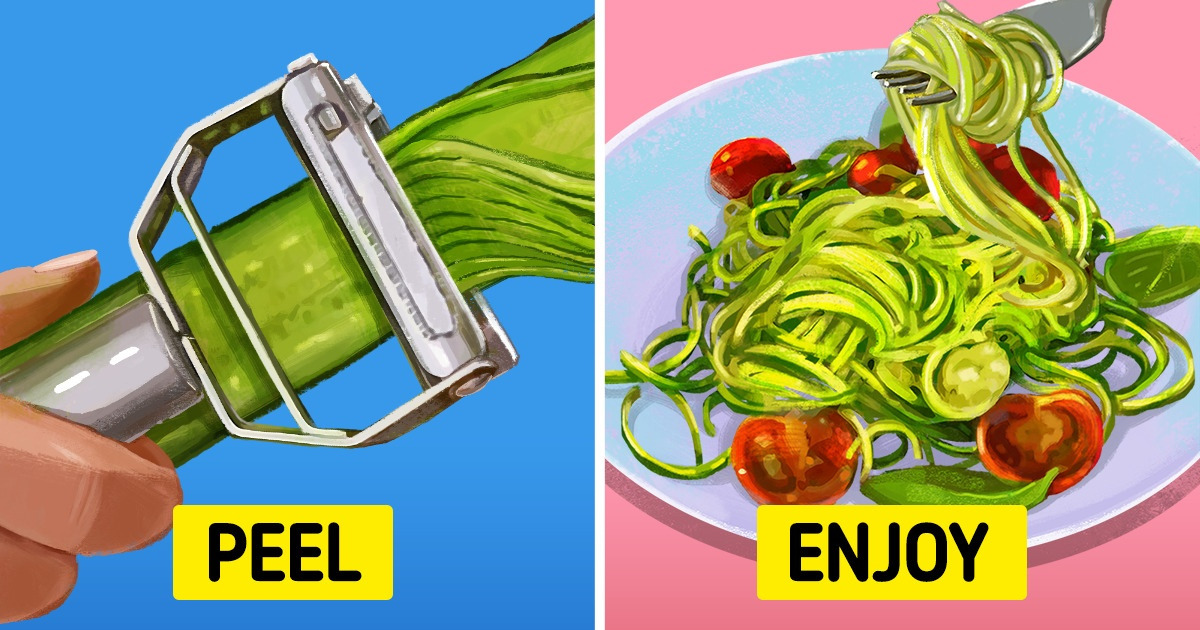
Everyone loves pasta, but sometimes you want a lighter, healthier meal or need a gluten-free substitute. Take your favorite vegetables and turn them into the best replacement noodles with simple tools. 5-Minute Crafts will tell you how.
What you’ll need
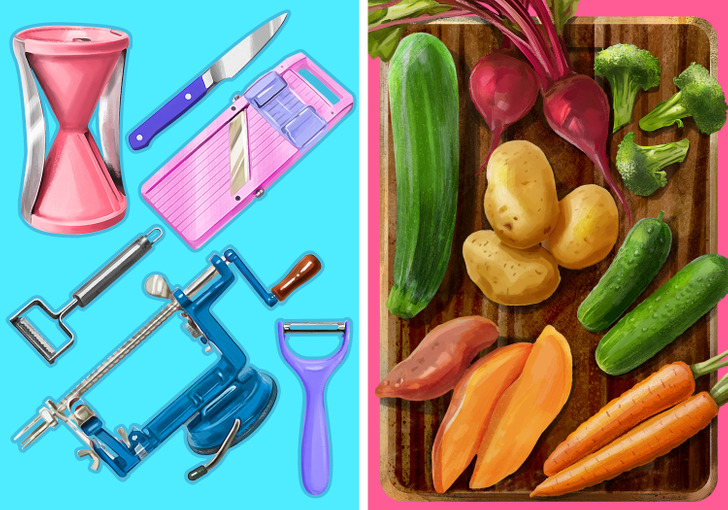
A tool of choice:
- Vegetable peeler
- Small kitchen knife (paring knife)
- Mandolin slicer
- Julienne peeler
- Spiralizer or hand spiralizer
A vegetable with hard or firm flesh:
- Peeled potatoes
- Peeled sweet potatoes
- Carrots
- Cucumber
- Peeled beets
- Zucchini
- Broccoli stems
1. Use a spiralizer or a hand spiralizer.
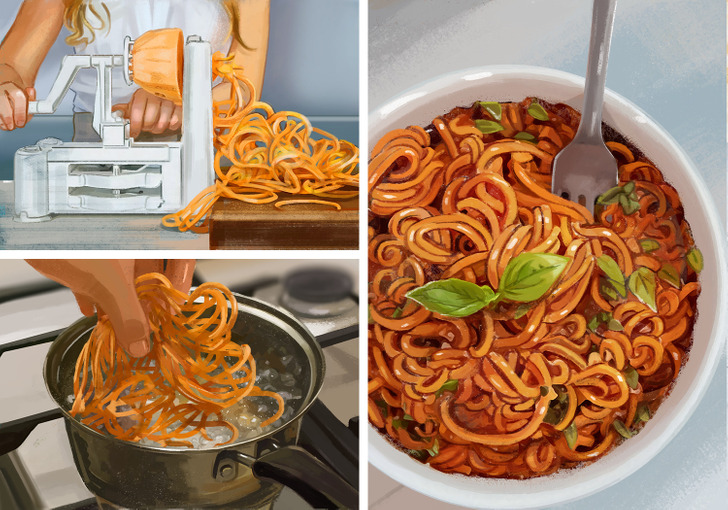
1️⃣ Wash the vegetable of choice; add lemon drops and vinegar to your water for a complete easy wash.
2️⃣ Place the largest end of the vegetable in your spiralizer and run it through. This way, you’ll get the best noodles.
3️⃣ Boil them just like pasta, in a pan with salted water, for 1 minute.
*️⃣ This gives you thick, consistent noodles that are easy to handle. They’re great for Italian dishes with tomato sauce and cheese. In addition to being boiled, they can also be sautéed or baked in the oven.
2. Use a vegetable peeler.
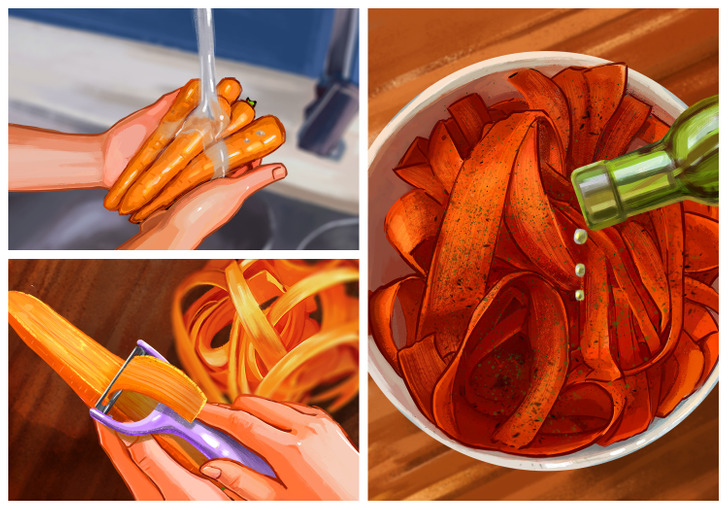
1️⃣ Wash the vegetables thoroughly.
2️⃣ Place the vegetable on a cutting board and run the peeler along its length. For the best results, maintain a consistent speed and pressure from the top to the bottom of the vegetable.
3️⃣ When you’ve created a flat surface with the peeler, rotate it. Continue running the peeler through, creating thin noodle strips, until you’ve peeled the whole vegetable.
*️⃣ These can be eaten raw with vinegar and olive oil, seasoned to taste. They can also be baked or sautéed and served with sauce.
3. Use a julienne peeler.
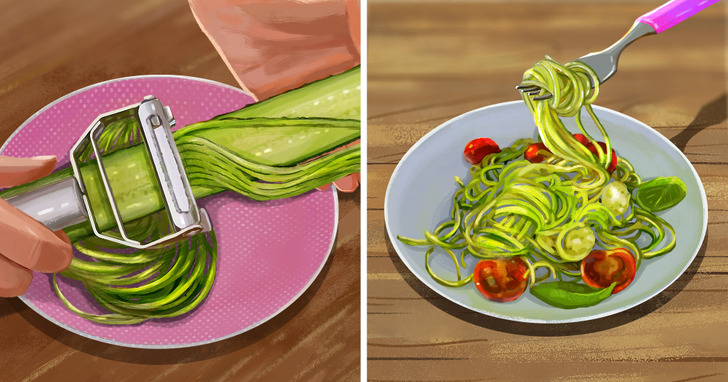
1️⃣ Wash the vegetables.
2️⃣ Run the julienne peeler through the vegetable — you can either hold it or set it down on a cutting board. Make sure to apply consistent force.
3️⃣ Rotate the vegetable while you cut it so as not to miss any parts.
4️⃣ Cook as you wish.
*️⃣The julienne peeler results in the thinnest noodles, so handle them carefully. They can be boiled, baked, or sautéed. A great way to prepare them is by sautéing with your favorite toppers, like mozzarella balls, cherry tomatoes, pesto, and some basil leaves.
4. Use a mandolin slicer.
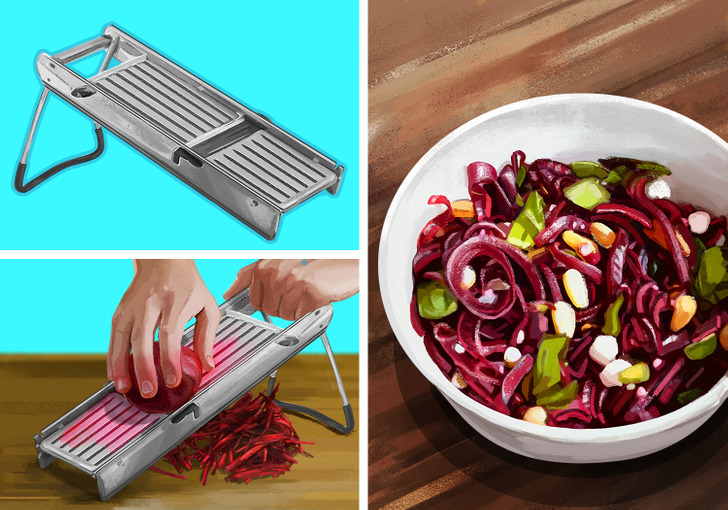
1️⃣ Clean the vegetables.
2️⃣ Assemble the mandolin with your blade of choice. You can make noodles similar to what the julienne peeler or the regular peeler achieve, but they’ll be thicker and more consistent.
3️⃣ Run the vegetable through the mandolin. Take extra care since the mandolin is usually very sharp.
4️⃣ Cook as you wish.
*️⃣ The mandolin is perfect for a vegetable that’s extra hard, and it’s the fastest option. The resulting shape depends on the blade you choose, but the result will always be very consistent.
5. Use a knife.
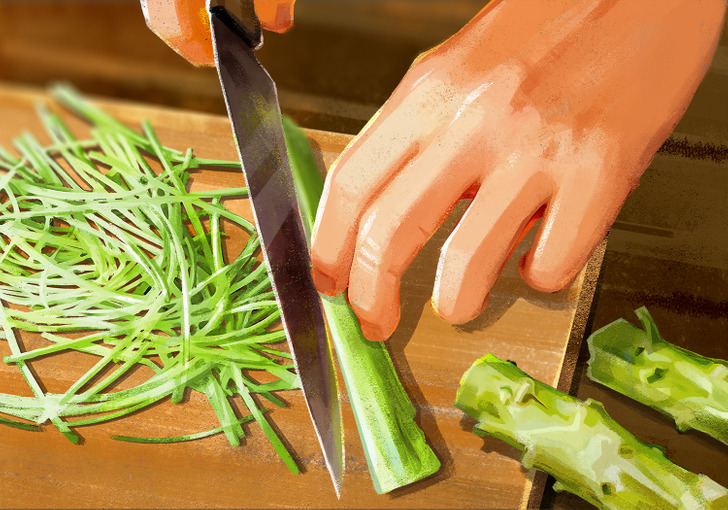
1️⃣ Wash the vegetables.
2️⃣ Cut them in half and place the cut, flat surface down on a cutting board.
3️⃣ Cut thin slices, lengthwise. Do it slowly to achieve a thicker consistency.
4️⃣ Separate those cut slices and cut each one into thinner strands, similar to spaghetti.
*️⃣ This method can work great if you don’t have the tools above, although, it is the one that takes the most time and can give you uneven results if not done carefully.
Tips and tricks:
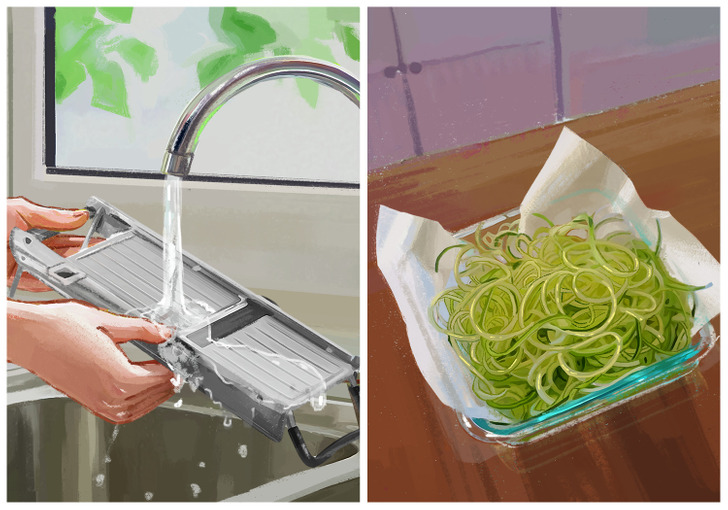
*️⃣ Cut your vegetable noodles ahead of time. It is possible to store the already-cut noodles in a plastic or glass container with a paper towel in it. They can be stored for 2 to 3 days.
*️⃣ Bigger vegetables are easier to work with. If you use a mandolin slicer or a spiralizer, always insert the largest end of the vegetable first.
*️⃣ Make sure to wash your tools as soon as you’re done; vegetables with bright colors, like carrots or beets, can stain your cutting board, spiralizer, or mandolin.
*️⃣Keep in mind that some vegetables need to be peeled, like potatoes, beets, or carrots, while others, like cucumbers and zucchinis, do not.
*️⃣ Be creative! These work as pasta replacements when boiled for 1 minute. They can be sautéed, baked, added to salads, or eaten raw; you decide what’s best for your dishes.